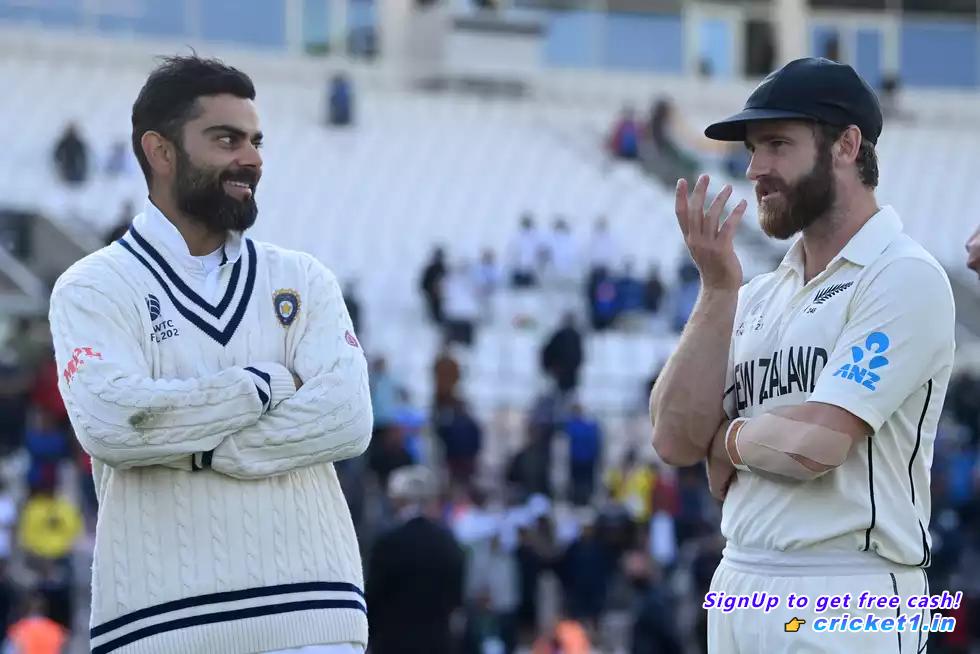
Tom Latham is stepping into familiar yet transformative shoes as he leads New Zealand on their latest cricket journey to India. Unlike previous occasions where Latham temporarily filled in as the captain, this trip marks a significant turn in his career. He arrives not as a temporary stand-in, but as the rightful leader of the New Zealand Test squad, a role now deemed permanent. This leadership comes amidst a backdrop of fluctuating form and an inevitable transition for the team.
Cricket history shows that progress for a Test side is seldom straightforward, a fact New Zealand is grappling with years after claiming the inaugural World Test Championship (WTC) title in 2021. Under the stewardship of Kane Williamson and Ross Taylor, the Kiwis scaled great heights in Southampton, defeating a formidable Indian team. However, since that pivotal match, the trajectory of these two cricketing nations in the game’s longest format has diverged significantly.
For India, the period following the WTC final of 2021 has been a journey of smooth, strategic transitions. The team has managed to phase out experienced players seamlessly, demonstrating a knack for reinvention while maintaining performance levels. Notably, veterans like Ishant Sharma and Umesh Yadav, key figures in the bowling lineup, were gradually eased out post the 2021 WTC final. In their stead, younger talents have emerged, sustaining India’s competitive edge in the subsequent WTC cycles.
Cheteshwar Pujara and Ajinkya Rahane, once stalwarts of the Indian middle order, saw their roles subtly decline as new players emerged. Shubman Gill, for instance, rose to prominence with a series-defining performance against England and continued his form against Bangladesh. KL Rahul, returning from injury, reclaimed his spot, illustrating the depth of India’s batting reserves. Emerging talents like Sarfaraz and Dhruv Jurel also provided glimpses of a promising future during the series against England. Jurel’s significant contribution in Ranchi relieved the pressure typically shouldered by Rishabh Pant, who has staged an impressive comeback from injury just in time for the demanding Australian tour.
The bowling department, too, showed resilience despite the absence of a key player like Mohammed Shami. Akash Deep delivered notable performances against Bangladesh, making a strong case for his inclusion in the upcoming series in Australia. Even if Shami returns, Deep’s contributions might see him included to provide additional pace options for India.
.
As Ravindra Jadeja and Ravichandran Ashwin near what could be the closing chapters of their illustrious Test careers, India benefits from the cushion provided by their presence, at least until the next significant marker on the horizon—the WTC final in 2025.
Conversely, New Zealand faces the challenge of rebuilding amidst an ongoing transition. The Kiwis, unlike India, have not enjoyed the luxury of a gradual evolution. Injury setbacks and the retirement of key players have left noticeable gaps. Kyle Jamieson, once a bowling hero for New Zealand, has been plagued by fitness issues, limiting his Test appearances since the 2021 WTC final. Similarly, Kane Williamson’s intermittent absences have compounded the team’s woes. Trent Boult’s retirement, along with the loss of a tireless warrior in Neil Wagner, either due to injury or eventual retirement in 2024, has further skewed New Zealand’s ability to field a consistent and formidable Test side.
From the original squad that brought home New Zealand’s maiden WTC title, only Tim Southee remains a constant fixture, having played in all 23 Tests since. However, his form has dipped, and he arrives in India without the captain’s mantle. Latham himself is looking to recapture his best, with his last century marked back in December 2022. Sporadic performances from players like Daryl Mitchell and Devon Conway have occasionally buoyed the team, but inconsistent resistance pales against a relentless force like India on home soil.
Latham’s side arrives in India aware of the formidable task ahead, as evidenced by their struggle in December 2021. Youngsters like William O’Rourke, new to the Test arena, must brace themselves for the challenges of bowling alongside an out-of-form Southee against a confident Indian lineup known for its dynamic approach to Test matches.
As the last week of September underscored during the teams’ separate matches, the paths of India and New Zealand have diverged since their shared 2021 triumph. The contrasting outcomes in their respective games highlighted the gulf in their Test journeys. While New Zealand faced disappointment in Galle, India celebrated an unexpected victory in Kanpur against the odds. As Latham and his team embark on this formidable tour, they face a steep learning curve against a dominant Indian side. Whether they can turn what promises to be a challenging experience into a beneficial one remains to be seen.

